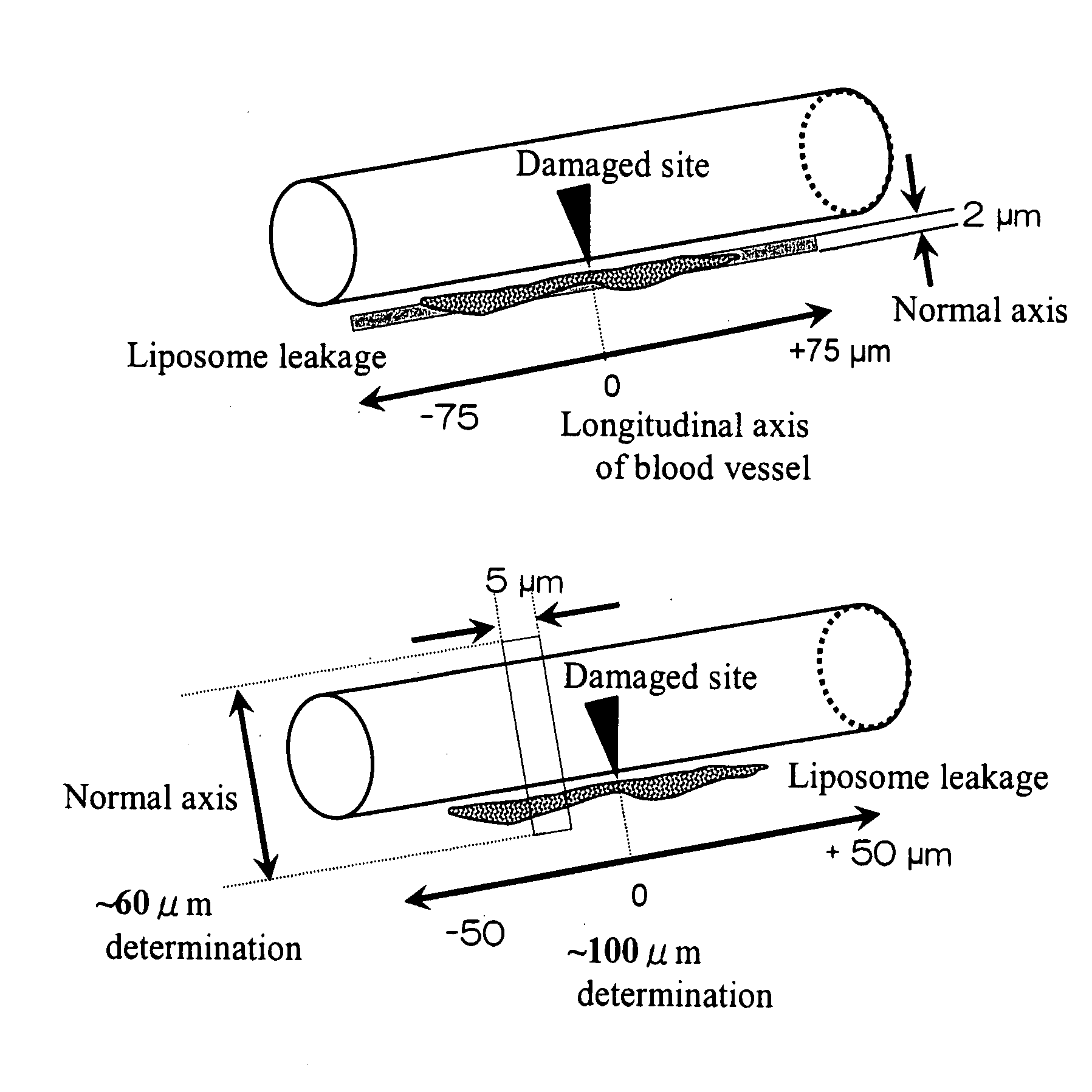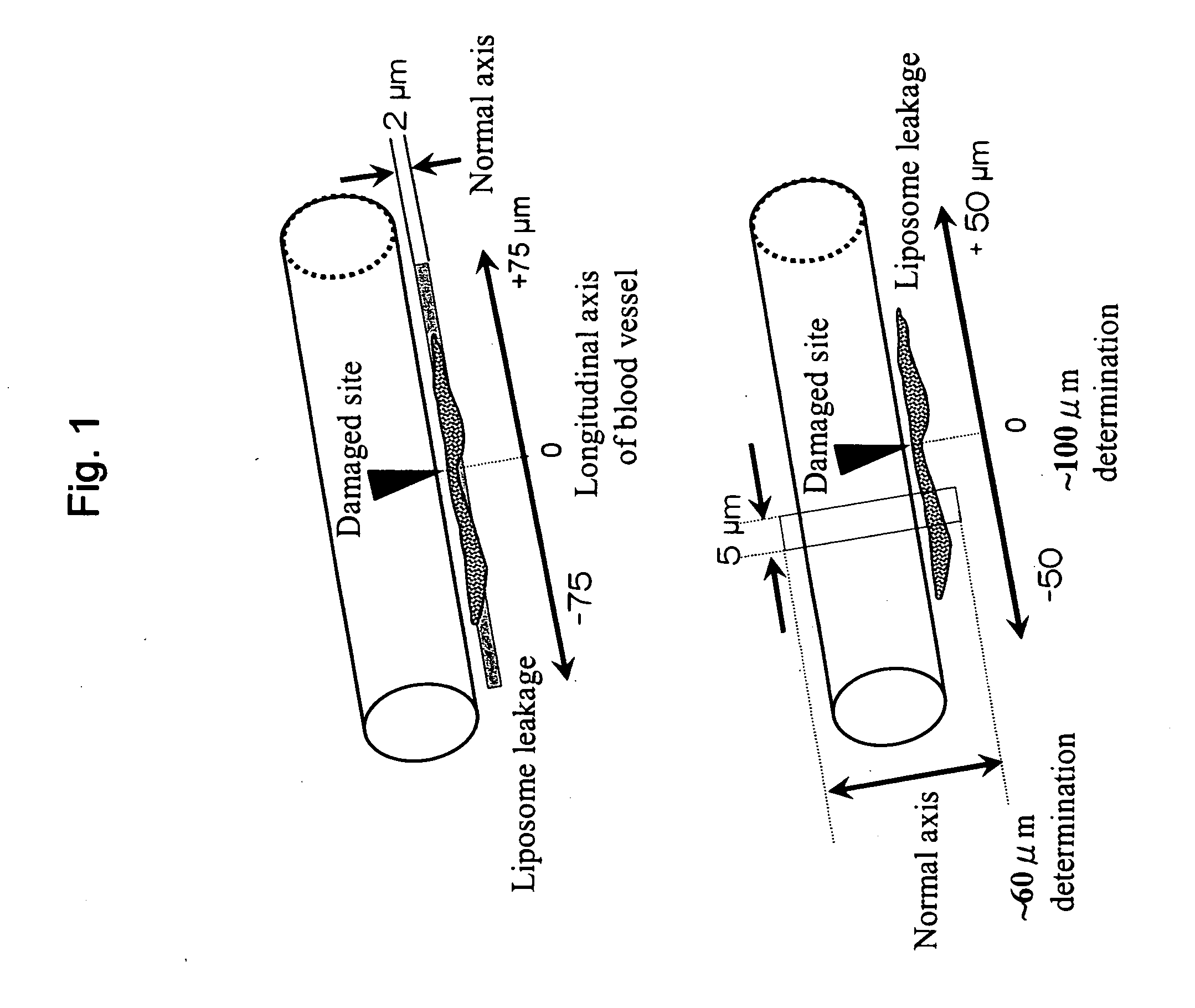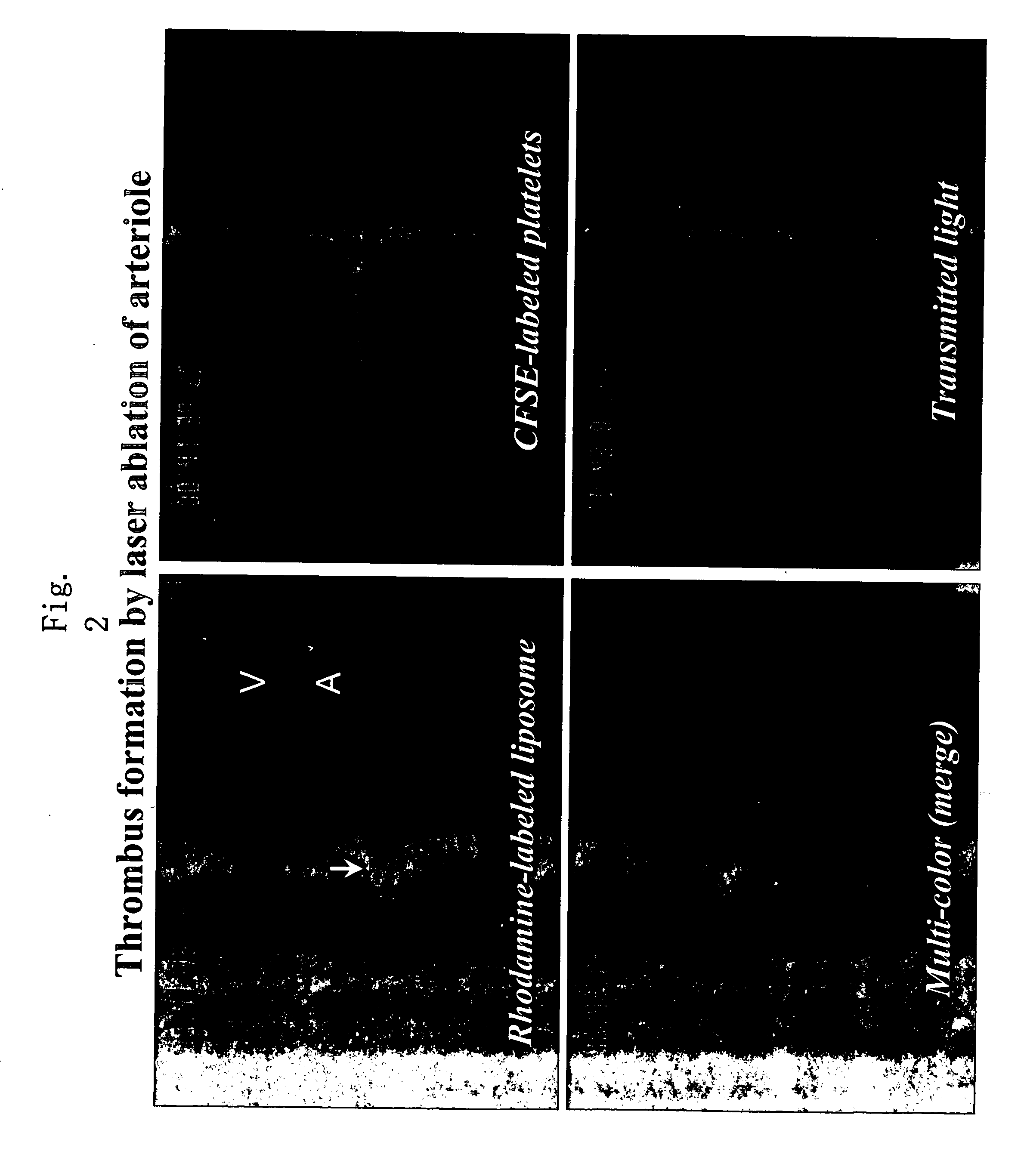Support Accumulating In Injured Part In Vascular Channel
a vascular channel and support technology, applied in the direction of antinoxious agents, drug compositions, extracellular fluid disorders, etc., can solve the problems of hemostatic reaction, morbidity and mortality, and the circulatory system
- Summary
- Abstract
- Description
- Claims
- Application Information
AI Technical Summary
Benefits of technology
Problems solved by technology
Method used
Image
Examples
example 1
Preparation of Liposome
[0125]One g of mixed lipid powder (DPPC (dipalmitoylphosphatidylcholine) / cholesterol / DPEA / PEG-DSP (N-(monomethoxypolyethyleneglycol-carbamyl)distearoylphosphatidyl ethanolamine)=5 / 5 / 10 / 0.033 (molar ratio)) was dispersed in 25 mL of saline and agitated at room temperature for 10 hours. The resultant was passed through a filter with a pore diameter of 0.22 μm twice in an extruder to obtain liposome dispersion with an average particle size of 263±43 nm. Lipid concentration in saline was 3 g / dL. To 20 ml of this dispersion, separately prepared Octadecyl Rhodamine B (from Molecular Probe) in ethanol solution (1 mg / 1 mL) was dropped for 600 μL while agitating, and further subjected to 2 hours of agitation with light being shielded. Liposomes were precipitated by ultracentrifugation (100,000 g, 60 min.+150,000 g, 30 min.). A slight amount of unintroduced dye and ethanol remaining in the supernatant were removed. Saline was added to redisperse the vesicles and the res...
example 2
Analysis of Liposome Behavior by Image Analysis Method
[0127]1. Biomicroscopic System and Microcirculation Observing / Recording System
[0128]Rats were bred under the control of the Laboratory Animal Center, School of Medicine, Keio University. According to the method of Suematsu et al. (Suematsu M, et al. Lab Invest 1994), male Wistar rats (200-250 g; Clea Japan, Tokyo) were anesthetized by intramuscular injection of pentobarbital sodium at 50 mg / kg, and a catheter was inserted into a femoral vein to administer carboxyfluorescein diacetate succinimidyl ester (CFDA-SE) at 1 mg / kg for biostaining of the platelets in the body.
[0129]The mesenterium at the ileocecal region was opened extraperitoneally to observe the microcirculatory system with an erecting-type confocal laser microscope.
[0130]A 60× objective lens was used. Within the light path of the microscope are implemented an argon laser capable of laser output at 488 nm that allows imaging of the CFSE fluorescence and laser output at ...
example 3
Liposome Behavior under Inflammation Stimulation
[0145]The present example aims at revealing liposome behavior upon stimulation of mesenterium with a general inflammation substance instead of mechanical stimulation. Histamine was used as the inflammation stimulating substance. In the same manner as the method of Example 2, male Wistar rats (200 to 250 g) were anesthetized by intramuscular injection of pentobarbital sodium at 50 mg / kg, and a catheter was inserted into a femoral artery. The mesenterium at the ileocecal region was opened extraperitoneally to observe the microcirculatory system with an erecting-type confocal laser microscope. A 60× objective lens was used.
[0146]The liposome dispersion prepared according to the method in Example 1 was infused into the femoral vein via the catheter for 250 μl per rat weighing 100 g (250 μl / 100 g rat, where proportion of liposome in the dispersion was 35% by volume (estimated number of liposomes in the sample being 4.8×1012 / ml)).
[0147]Ten m...
PUM
 Login to View More
Login to View More Abstract
Description
Claims
Application Information
 Login to View More
Login to View More - R&D
- Intellectual Property
- Life Sciences
- Materials
- Tech Scout
- Unparalleled Data Quality
- Higher Quality Content
- 60% Fewer Hallucinations
Browse by: Latest US Patents, China's latest patents, Technical Efficacy Thesaurus, Application Domain, Technology Topic, Popular Technical Reports.
© 2025 PatSnap. All rights reserved.Legal|Privacy policy|Modern Slavery Act Transparency Statement|Sitemap|About US| Contact US: help@patsnap.com



